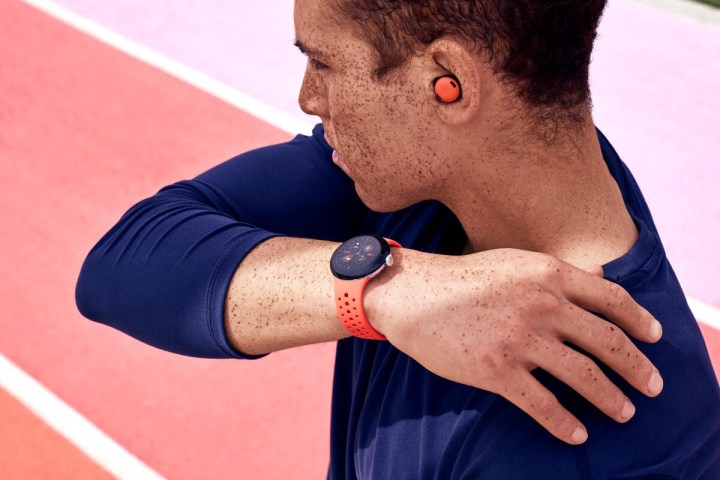
I don’t think the Google Pixel Watch 2 is a smartwatch. I think it’s merely being passed off as one, as once more, Google hasn’t treated the design like a smartwatch at all.
Why? Because it has only made it in a single case size, which is the same mistake it made with the first Google Pixel Watch, and it’s shocking to see it has done so again. Due to this, it’s time we stopped calling it a smartwatch, as it has more in common with another popular type of wearable: a fitness band.
How smartwatches and fitness bands are different
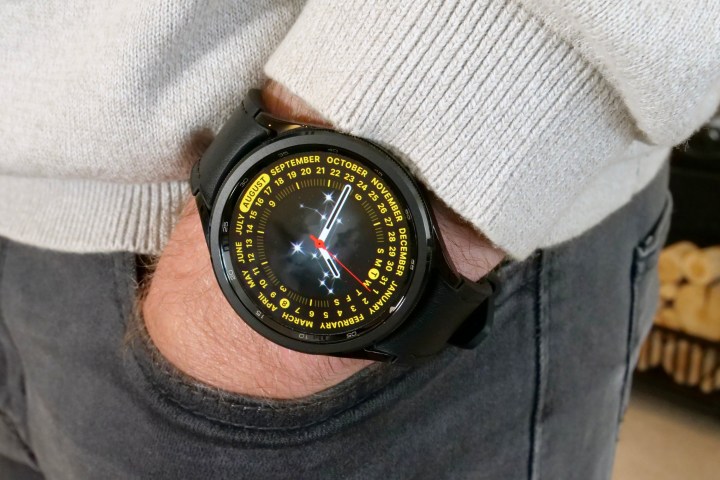
Why do I think the Pixel Watch 2 is a fitness band and not a smartwatch? Let me explain. Smartwatches have a dual role. In addition to all the smart features provided by it connecting to your phone, plus the health and fitness features delivered through the sensor array and software, a smartwatch should replicate the feeling of wearing a traditional watch through its design, style, fit, and finish. It’s taking up valuable wrist space and is often chosen as much for the way it looks as it is for its functionality.
A fitness tracker is chosen almost solely for its functionality. It performs a function and adopts a minimalist design so as to be unobtrusive on your wrist. Wearers accept this because the design is secondary to the data it provides. And as long they aren’t shaped like a wart on your wrist and come in some pretty colors, fitness bands are accepted and largely forgotten about once put on. See every single Fitbit, Xiaomi Smart Band, or cheap knockoff available on Amazon for evidence. They’re functional, but never very desirable, and we wear them for their ability, not because they make us feel something.
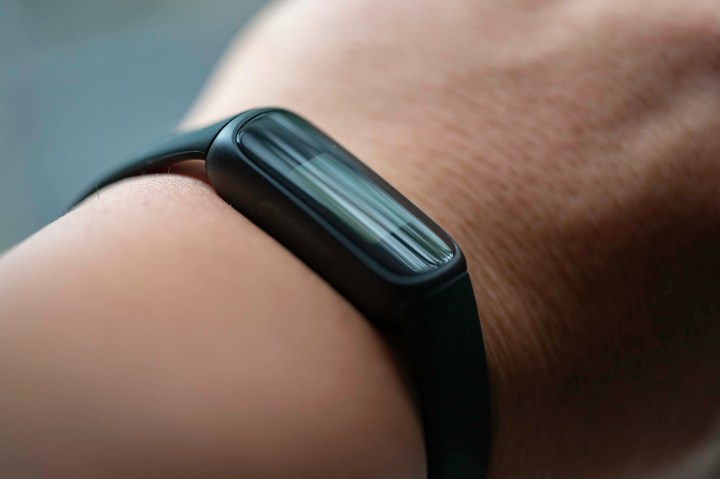
Telling the time isn’t a good enough reason to solely strap a watch to our wrist anymore, as we can see the time on our phones, so a watch needs to make us feel something. Making sure it is desirable and looks good on a wide variety of wrists is therefore crucial, and the key to this happening is to provide it in different case sizes.
If you don’t, it ends up being either too big or too small — and very rarely just right. Fitness trackers, because the design isn’t a highlight, tend to be smaller, so they are less noticeable and less likely to clash with the watch or jewelry we want to wear.
No change for the Pixel Watch 2
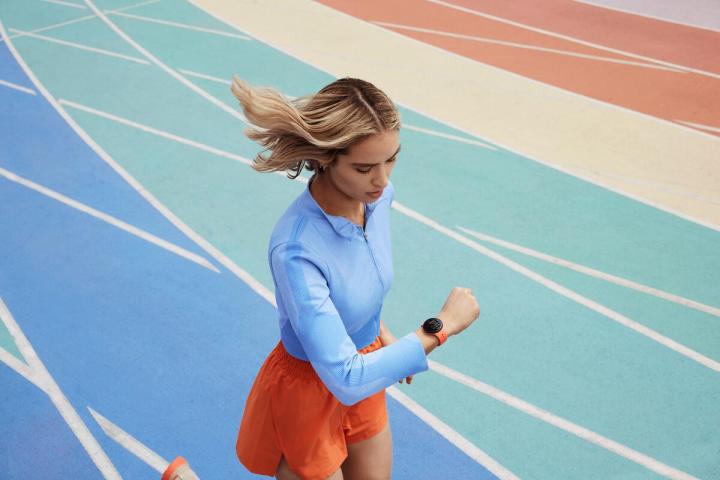
The Pixel Watch 2 looks the same as the Pixel Watch. It’s small, unfussy, and made of aluminum, with domed glass over the screen. There are different bands attached using a proprietary system, and it comes in four different color combinations — Polished Silver/Bay Blue, Polished Silver/Porcelain, Matte Black/Obsidian, and Champagne Gold/Hazel. The case back has been given a new look to accommodate new sensors. It’s round like a watch, but when you describe it, it sounds like a fitness band.
Its shape is simple to the point of being invisible, and it still only comes in a single 41mm case size. The Apple Watch Series 9, the Samsung Galaxy Watch 6 and Galaxy Watch 6 Classic, and other models like the Tag Heuer Connected Calibre E4 all come in two different case sizes. Google says it did a lot of research into what size watch suited the most people before settling on the 41mm case size, and on paper, this common size should work well. But in reality, the minimalist, no-lug design shrinks it right down, and it wears more like a 39mm or even smaller watch.
I don’t mind the Pixel Watch 2’s minimalist design, even if it is a bit unimaginative. I have also deliberately purchased traditional watches with a 41mm case, as they suit my wrist better than smaller versions of the same watch. It means I really should be able to put the Pixel Watch 2 on my wrist and not feel like I’ve accidentally put on the child’s version — or think my wrist has mysteriously ballooned from 6.5 inches to 8.5 inches overnight. Yet, that’s precisely what I think, and I don’t think I will be alone.
The solution would be to simply select the size up, just like I do with the Galaxy Watch 6 and Apple Watch. I’ve worn a 41mm Apple Watch in the past, just to see, and it looks silly on my wrist, which is why I wear a 45mm model. Except I can’t get the next size up with a Pixel Watch because Google has done its research and thinks 41mm is good enough to satisfy everyone. This is fitness band thinking, not watchmaking.
Fitbit’s influence runs deeper than the software
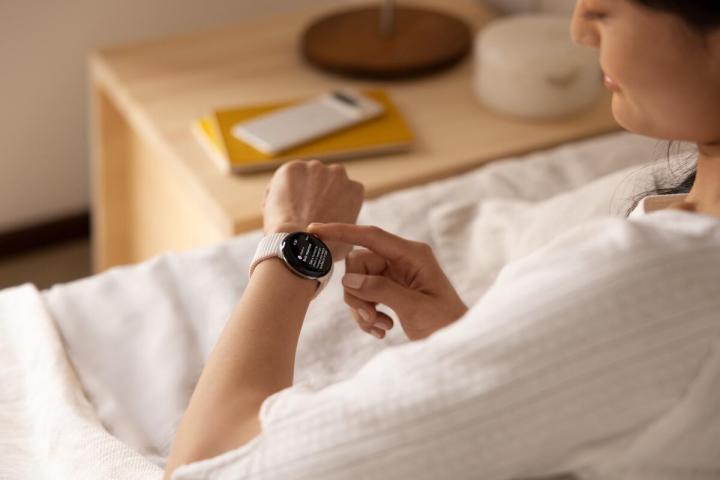
This total belief in a single, one-size-fits-all number proves Google has made a fitness band and not a smartwatch. Google can call it a smartwatch or even a timepiece, as it bravely does in some of the press materials, but very, very few watchmakers only offer a single watch in a single size. If I’m going to wear a watch all the time, then I want it to suit my wrist, and the case size dictates this more than anything else. If there’s only one size and it looks a bit silly on me, then I’m not going to buy it. Watchmakers know this, and the majority of smartwatch makers have sensibly adopted the same philosophy.
On the other hand, fitness bands almost always come in a single, small size and have a minimalist, unassuming design. They can be shown off at the gym, then hidden away when you don’t want to look like you run absolutely everywhere. Fitbit has followed this formula from the very beginning, and its so-called smartwatches are just jazzier versions of its fitness bands. Fitbit, now a Google company, is a major part of the Pixel Watch 2’s software, but its influence clearly extends beyond this and into the design. There’s nothing wrong with a fitness band, but they aren’t smartwatches. Not even close.
If you’re thinking about buying the Pixel Watch 2, don’t do so by comparing it with the Galaxy Watch 6, Apple Watch Series 9, or even the Huawei Watch GT 4. Google may say the Pixel Watch 2 is a smartwatch, but it has been designed like a fitness band, and you may find it doesn’t fit on your wrist or into your lifestyle very well. It definitely doesn’t fit me. Instead, think of it as an alternative to something like a Fitbit Sense 2.
Google has, perhaps unintentionally, treated the Pixel Watch 2 exactly like a fitness band, and so should you.
Editors' Recommendations
- 5 smartwatches you should buy instead of the Google Pixel Watch 2
- 5 phones you should buy instead of the Google Pixel 8
- Google Pixel Watch 3: news, rumored price, release date, and more
- Google Pixel Fold 2: news, rumored price, release date, and more
- The Google Pixel Fold 2 could get a massive display upgrade


